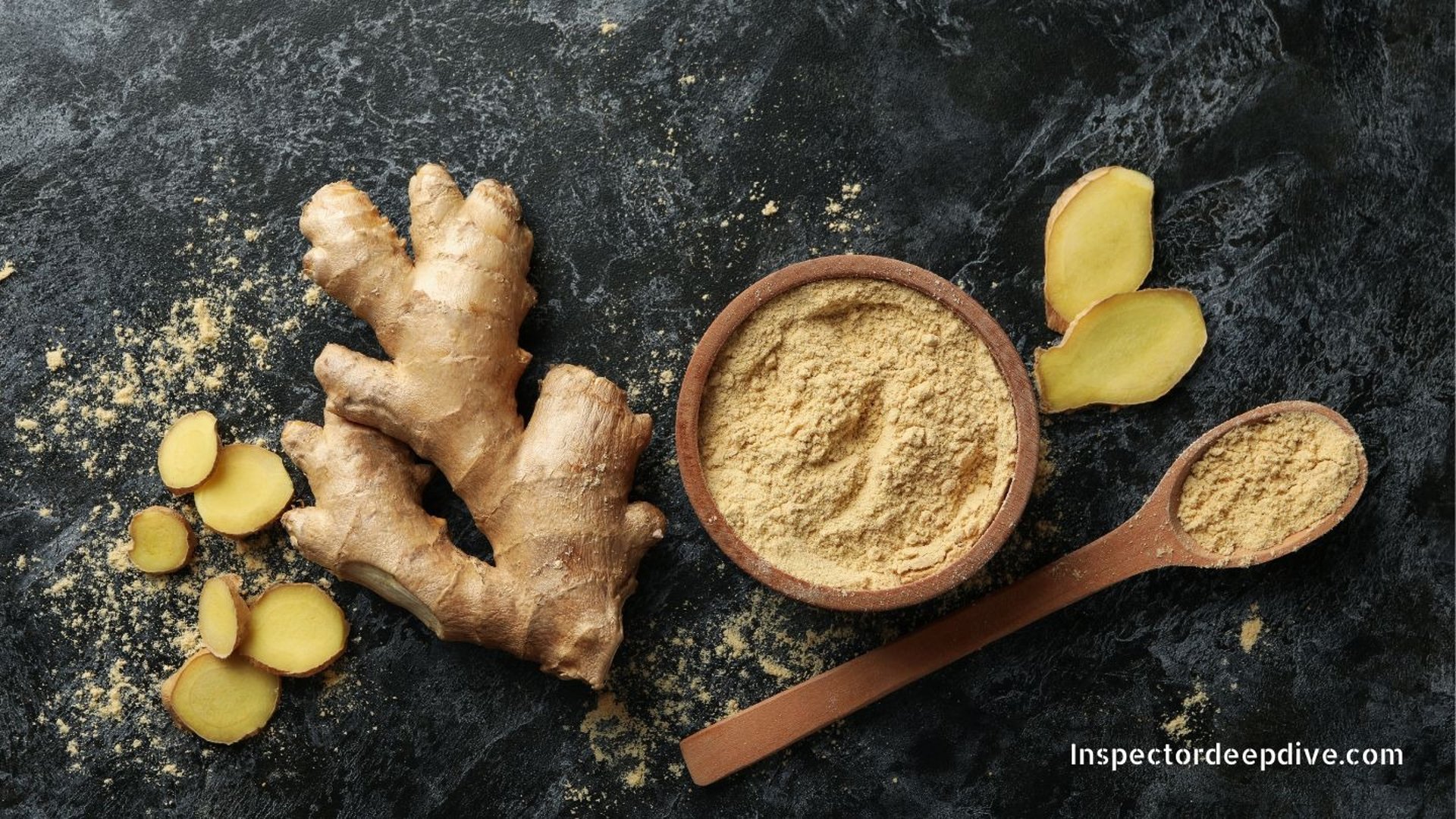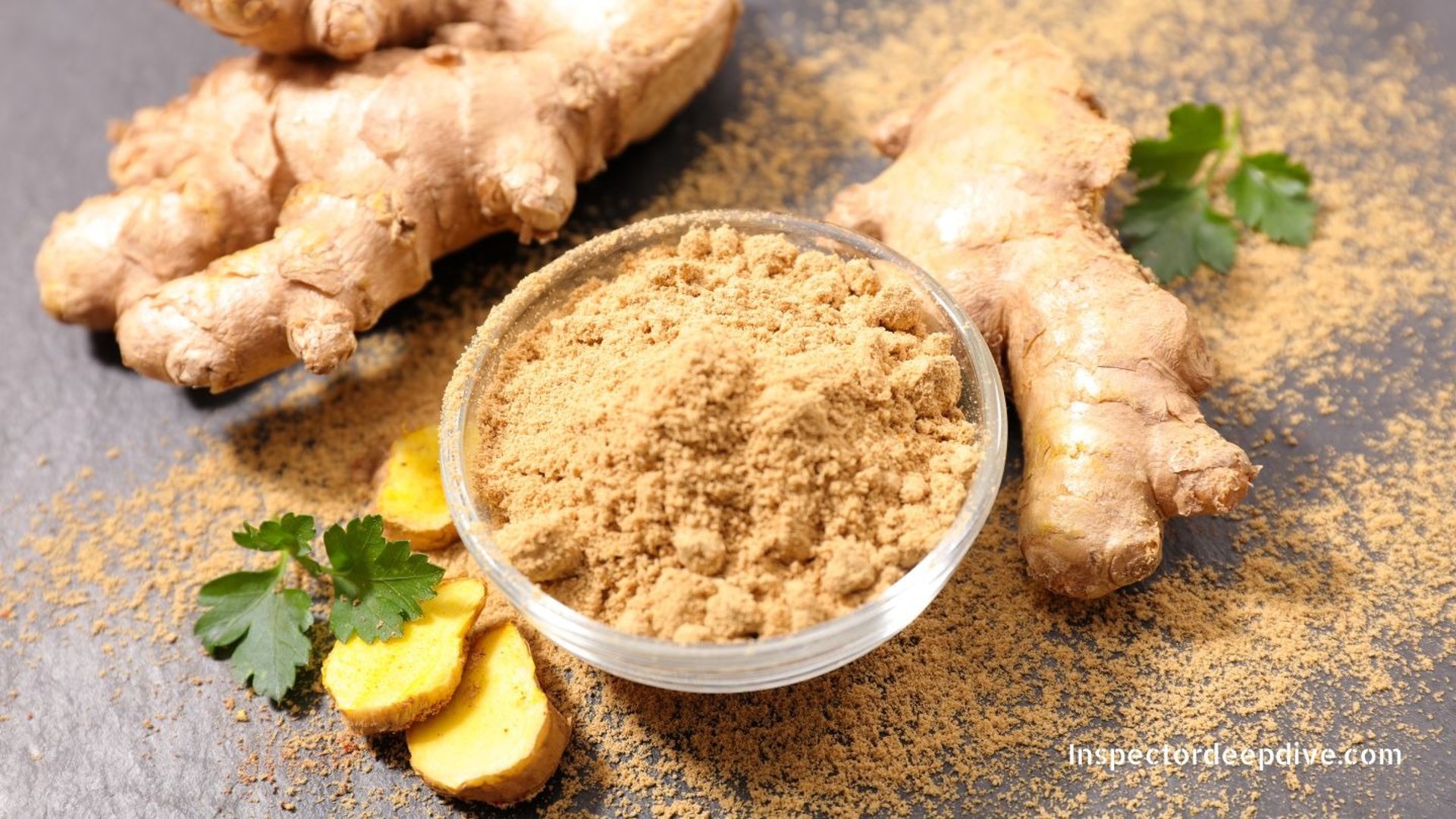
Ginger Science: Understanding Its Role in Digestion, Pain, and Immunity

Scientific name: Zingiber officinale
Family: Zingiberaceae
What is ginger?
Ginger is a flowering plant whose underground rhizome is widely used as a spice and herbal remedy. Valued for its sharp, spicy flavor and warming effect, ginger is used fresh, dried, powdered, juiced, and as an oil or extract. Traditional and modern uses focus on digestion, circulation, anti-inflammatory support, and immune function.
Where does it come from?
Native to Southeast Asia, ginger has been used for thousands of years in cooking and traditional medicine. It spread along ancient trade routes to India, the Middle East, and Europe. Major contemporary producers include India, China, and Nigeria.
Varieties
Common types include Chinese white ginger, African yellow ginger, Australian red ginger, and Indian varakkurup. Varietal differences are generally in heat level, aroma, and culinary or medicinal application. All contain key bioactive compounds such as gingerol and shogaol.
Seasonality & availability
Ginger is available year-round in fresh, dried, and powdered forms. Peak harvest seasons vary by growing region but generally occur from late fall through winter in tropical zones.
Benefits of ginger
Digestive support: reduces nausea, bloating, and improves gut motility.
Anti-inflammatory effects: contains gingerol and shogaol which modulate inflammatory pathways.
Circulation support: may improve peripheral circulation and warmth.
Immune support: bioactives enhance aspects of immune response.
Metabolic effects: may assist blood sugar regulation and insulin sensitivity in some contexts.
The “Anti” factor
Anti-inflammatory: gingerol and shogaol help reduce chronic inflammation.
Antioxidant: neutralizes free radicals and protects cells from oxidative damage.
Nausea-relieving: effective for motion sickness, pregnancy-related nausea, and postoperative nausea in many studies.
Circulation-boosting: supports healthy blood flow and thermoregulation.
Immune-supporting: exhibits activity that supports white blood cell function and antimicrobial effects.
Nutritional breakdown (per 10 g raw)
Vitamins
Vitamin C: 0.7 mg supports immunity and skin health
Vitamin B3 (niacin): 0.03 mg supports nervous system function
Vitamin B6: 0.02 mg aids brain function and metabolism
Folate: 1.8 µg essential for DNA synthesis and fetal development
Vitamin E: 0.03 mg protects lipids from oxidation
Minerals
Potassium: 19 mg supports heart rate and muscle function
Magnesium: 1.6 mg involved in nerve and cardiac function
Calcium: 1.6 mg minor contribution to bone structure
Iron: 0.15 mg assists oxygen transport
Zinc: 0.14 mg supports immune responses and wound healing
Macronutrients
Calories: 8 kcal low-energy, nutrient-dense spice
Water: 7.6 g contributes to hydration
Protein: 0.1 g trace amino acid source
Total fat: 0.17 g minimal fat content
Carbohydrates: 1.8 g includes natural sugars and fiber
Dietary fiber: 0.2 g supports digestive wellness
Sugars: 0.3 g small amounts of natural glucose/fructose
How ginger affects the body (informative summary)
Digestive support: gingerol stimulates digestive enzymes, reduces bloating, and soothes nausea.
Inflammation regulation: gingerols and shogaols inhibit inflammatory signaling and may reduce pain.
Immune activation: compounds in ginger support aspects of immune cell function and have mild antimicrobial properties.
Circulation: ginger can enhance peripheral blood flow and support thermoregulation.
Metabolic balance: some studies indicate improvements in glucose regulation and insulin sensitivity, though effects vary by population and dose.
Synergistic pairings
Ginger’s effects are commonly enhanced when combined with:
Black pepper increases bioavailability of gingerol and other phytochemicals.
Lemon complementary immune support and improved mineral uptake.
Turmeric additive anti-inflammatory activity (gingerol + curcumin).
Garlic combined antimicrobial and immune benefits.
Honey soothing agent for throat and mild antimicrobial support in warm beverages.
Surprising truths
Ginger can reduce exercise-related muscle pain.
It has a long history of use for morning sickness and motion sickness.
Fresh ginger contains higher gingerol levels than dried or powdered forms.
In medicinal amounts, ginger can influence blood clotting parameters.
Environmental impact
Ginger thrives in warm, humid conditions and requires moderate water. When grown sustainably (e.g., intercropping, reduced pesticide use), its environmental footprint can be relatively low. Conventional intensive farming practices may increase pesticide and water impacts.
Storage & shelf life
Fresh ginger: refrigerate (unpeeled) up to about three weeks; peel and freeze for up to six months.
Dried/powdered ginger: store up to a year in a cool, dark place in an airtight container.
Proper storage preserves flavor and bioactive potency.
Culinary & chef tips
Use fresh ginger in teas, stir-fries, marinades, dressings, and soups for maximum potency.
Grate, thin-slice, or crush to release oils and aroma.
Dried ginger suits baked goods and spice blends.
Pair ginger with acidic ingredients (lemon, tomato) to brighten flavor and balance richness.
Recipe ideas
Ginger lemon tea with honey
Ginger chicken stir-fry with broccoli
Spiced carrot soup with fresh ginger
Golden milk (ginger + turmeric)
Whole-grain ginger biscuits
Science behind it
Ginger contains gingerol, shogaol, and zingerone compounds with antioxidant and anti-inflammatory properties that influence cellular signaling, oxidative stress markers, and gastrointestinal motility. Clinical and preclinical studies support ginger’s role in reducing nausea, modulating pain and inflammation, and contributing to metabolic regulation.
Scientific breakthroughs as of 2025 (informative)
Clinical evidence in 2025 confirmed ginger extract can reduce joint pain in osteoarthritis by modulating inflammatory markers.
Improved delivery systems developed to enhance gingerol bioavailability in supplements.
Advances in gut–brain research strengthened evidence for ginger’s efficacy against chemotherapy- and pregnancy-related nausea.
Safety notes and cautions (informative)
High medicinal doses of ginger can affect blood clotting; caution is advised for individuals on anticoagulant therapy.
Large doses may cause heartburn or gastrointestinal irritation in sensitive people.
Consultation with a healthcare professional is recommended before using concentrated ginger therapeutically, particularly with concurrent medications or medical conditions.
FAQs
Can ginger help with weight loss?
Some studies suggest ginger may modestly support metabolism and appetite regulation; results vary.Does ginger cause heartburn?
In large amounts, ginger can irritate the stomach for susceptible individuals.Why does ginger taste spicy?
Active compounds such as gingerol stimulate heat and pain receptors, producing the perception of spiciness.Is organic ginger worth it?
Organic ginger may reduce exposure to synthetic pesticides; value depends on consumer priorities.
Ginger Science: Understanding Its Role in Digestion, Pain, and Immunity
info@inspectordeepdive.com
© 2025 food.InspectorDeepDive.com. All rights reserved. Content may not be copied or republished without permission.
This article is for informational purposes only. InspectorDeepDive.com does not provide medical advice. Always consult a licensed healthcare provider before making dietary or health decisions.
